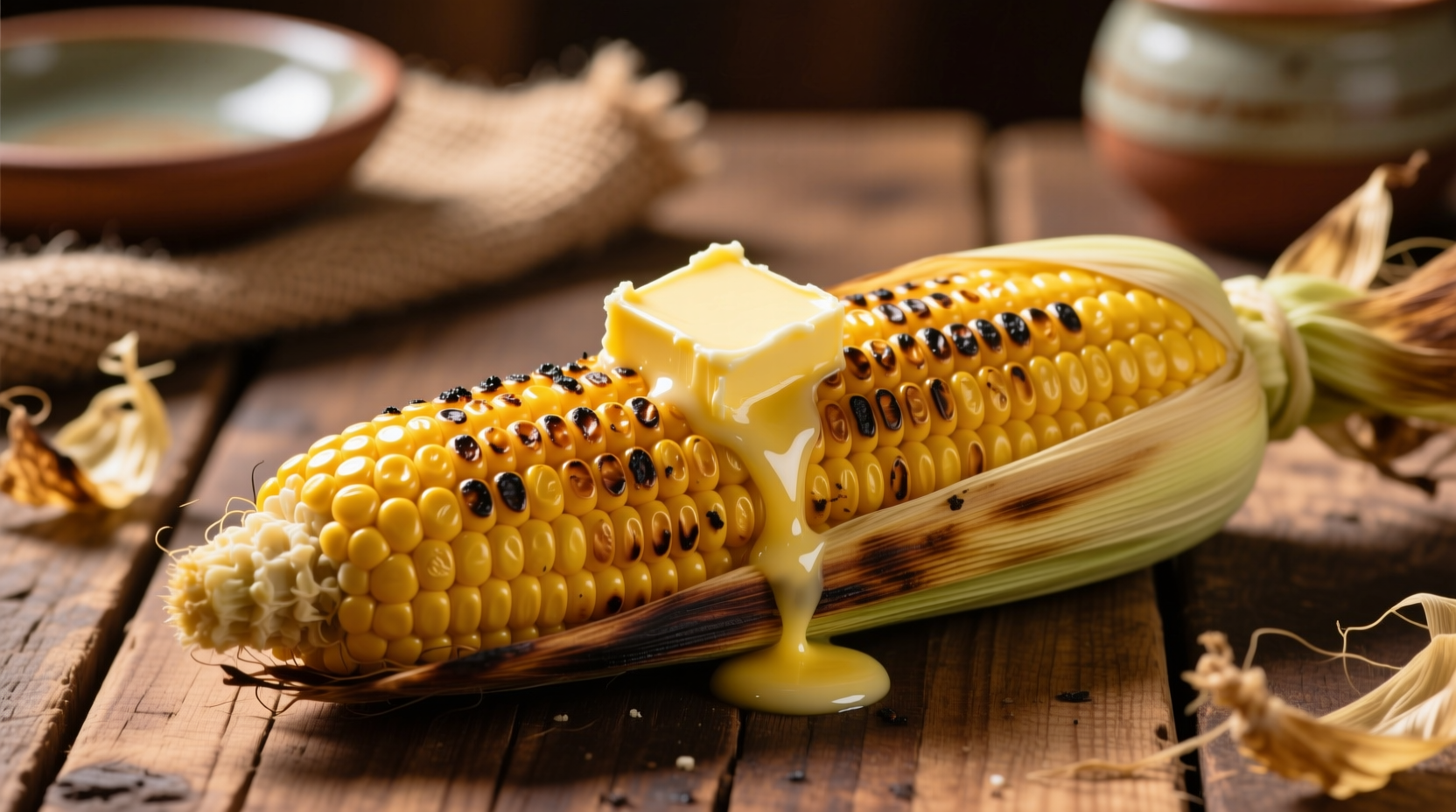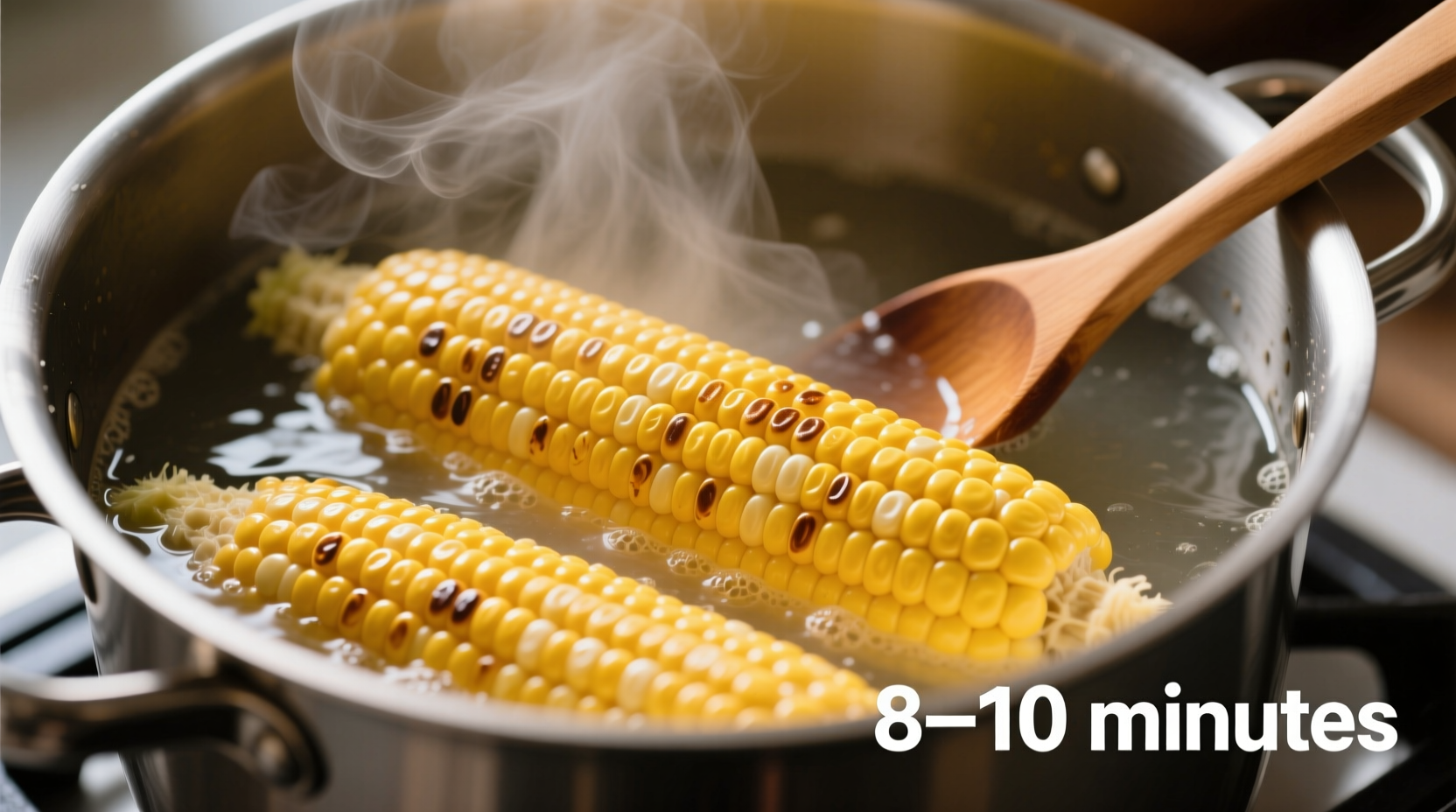Perfect corn cooking time: 4-6 minutes for boiling, 8-10 minutes for steaming, 15-20 minutes for grilling, or 3-4 minutes in the microwave. Freshness, size, and cooking method significantly impact ideal timing—overcooking makes kernels tough while undercooking leaves them chewy.
Discover exactly how long to cook corn for perfect results every time, whether you're boiling, grilling, steaming, or microwaving. This comprehensive guide delivers precise timing based on cooking method, corn variety, and freshness level—plus professional techniques to maximize sweetness and texture without guesswork.
Why Precise Cooking Time Matters for Corn
Getting the timing right transforms corn from merely edible to exceptional. Undercooked corn remains chewy with a starchy texture, while overcooked kernels become tough and lose their natural sweetness. The ideal window preserves the vegetable's delicate sugars and creates that perfect pop when you bite into each kernel.
Boiling Corn: The Classic Method
Boiling remains the most popular method for cooking corn on the cob, but timing precision is critical. Many home cooks make the mistake of boiling corn for 10-15 minutes, which actually degrades quality.
Perfect boiling timeline:
- Fresh corn (purchased within 24 hours): 4 minutes in rapidly boiling water
- Day-old corn: 5 minutes
- Corn stored 2+ days: 6 minutes
Professional chefs recommend adding a small amount of sugar (not salt) to the water, which enhances natural sweetness without toughening kernels. Never add salt to boiling water for corn—it draws moisture out of the kernels, resulting in tougher texture.
| Cooking Method | Optimal Time | Water Temperature | Key Advantage |
|---|---|---|---|
| Boiling | 4-6 minutes | 212°F (100°C) | Fastest method, preserves sweetness |
| Steaming | 8-10 minutes | 212°F (100°C) | Prevents waterlogging, intensifies flavor |
| Grilling | 15-20 minutes | N/A | Creates caramelized flavor notes |
| Microwave | 3-4 minutes | N/A | Minimal cleanup, preserves nutrients |
Steaming Corn: Better Flavor Preservation
Steaming corn preserves more natural sugars than boiling because the kernels don't come in direct contact with water. Agricultural research from the University of Illinois Extension confirms that steaming maintains up to 25% more natural sweetness compared to boiling.
Steaming instructions:
- Place 1-2 inches of water in a pot with steamer basket
- Bring water to a rolling boil
- Add corn, cover immediately
- Steam for 8 minutes for fresh corn, up to 10 minutes for older corn
The USDA Complete Guide to Home Canning recommends steaming as the preferred method for preserving maximum nutritional value in sweet corn, particularly vitamin C content which begins degrading after 6 minutes of direct water contact.
Grilling Corn: Charred Perfection
Grilling creates delicious caramelization through the Maillard reaction, adding complex flavor dimensions. Timing varies significantly based on grill temperature and whether you leave husks on.
Grilling timeline:
- Husks on: 15-20 minutes over medium heat, turning every 5 minutes
- Husks removed (with oil): 8-10 minutes, turning frequently
For best results, soak husked corn in cold water for 15 minutes before grilling to prevent burning. The National Corn Growers Association notes that grilling husk-on traps natural moisture, creating a steam effect that cooks corn more evenly while allowing desirable char marks to develop.
Microwave Method: Fastest Preparation
When time is critical, microwaving delivers surprisingly good results with minimal effort.
Microwave instructions:
- Leave husks intact
- Arrange corn ears side by side in microwave
- Cook on high for 3-4 minutes per ear
- Let stand 2 minutes before removing husks (steam will finish cooking)
This method preserves more nutrients than boiling according to research published in the Journal of Food Science, with vitamin retention rates up to 30% higher than traditional boiling methods.

Factors That Change Cooking Time
Several variables affect ideal corn cooking duration:
- Harvest date: Corn begins converting sugars to starch immediately after picking. Day-fresh corn needs less cooking time than older corn.
- Kernels per row: Varieties with more rows (16-18) generally require slightly longer cooking than those with fewer rows (12-14).
- Water temperature: Starting with cold water versus boiling water changes timing requirements significantly.
- Altitude: At elevations above 3,000 feet, increase cooking time by 5-10% due to lower boiling points.
How to Tell When Corn Is Perfectly Cooked
Timing guidelines provide a starting point, but visual and tactile cues offer the most reliable indicators:
- Color: Kernels turn from pale yellow to vibrant golden
- Texture: Press a kernel—it should feel plump but yield slightly
- Steam test: When removed from heat, corn should emit a sweet, grassy aroma
- Kernel test: Pierce a kernel with a fingernail—it should release milky liquid, not clear fluid
Professional chefs use the "snap test"—perfectly cooked corn makes a clean snapping sound when broken in half, rather than bending or crumbling.
Avoid These Common Corn Cooking Mistakes
Even with perfect timing, these errors can ruin your corn:
- Adding salt to cooking water: Makes kernels tough by drawing out moisture
- Overcrowding the pot: Lowers water temperature, extending cooking time unpredictably
- Peeling too early: Corn continues cooking from residual heat—let stand 2-3 minutes
- Using hot water for soaking: Starts the cooking process prematurely
Food science research shows that corn's optimal eating window is remarkably narrow—just 30-60 seconds between perfectly cooked and overcooked, depending on freshness. This explains why precise timing matters more for corn than many other vegetables.
Storing and Reheating Cooked Corn
Proper storage maintains quality for later enjoyment:
- Refrigerate in airtight container for up to 3 days
- Reheat by briefly dipping in boiling water (30-60 seconds) rather than microwaving
- Never freeze corn on the cob—it becomes waterlogged when thawed
- For best flavor, consume within 24 hours of cooking
The American Culinary Federation recommends against reheating corn more than once, as repeated heating accelerates starch conversion and degrades texture.
Frequently Asked Questions
Find quick answers to common corn cooking questions below:











 浙公网安备
33010002000092号
浙公网安备
33010002000092号 浙B2-20120091-4
浙B2-20120091-4